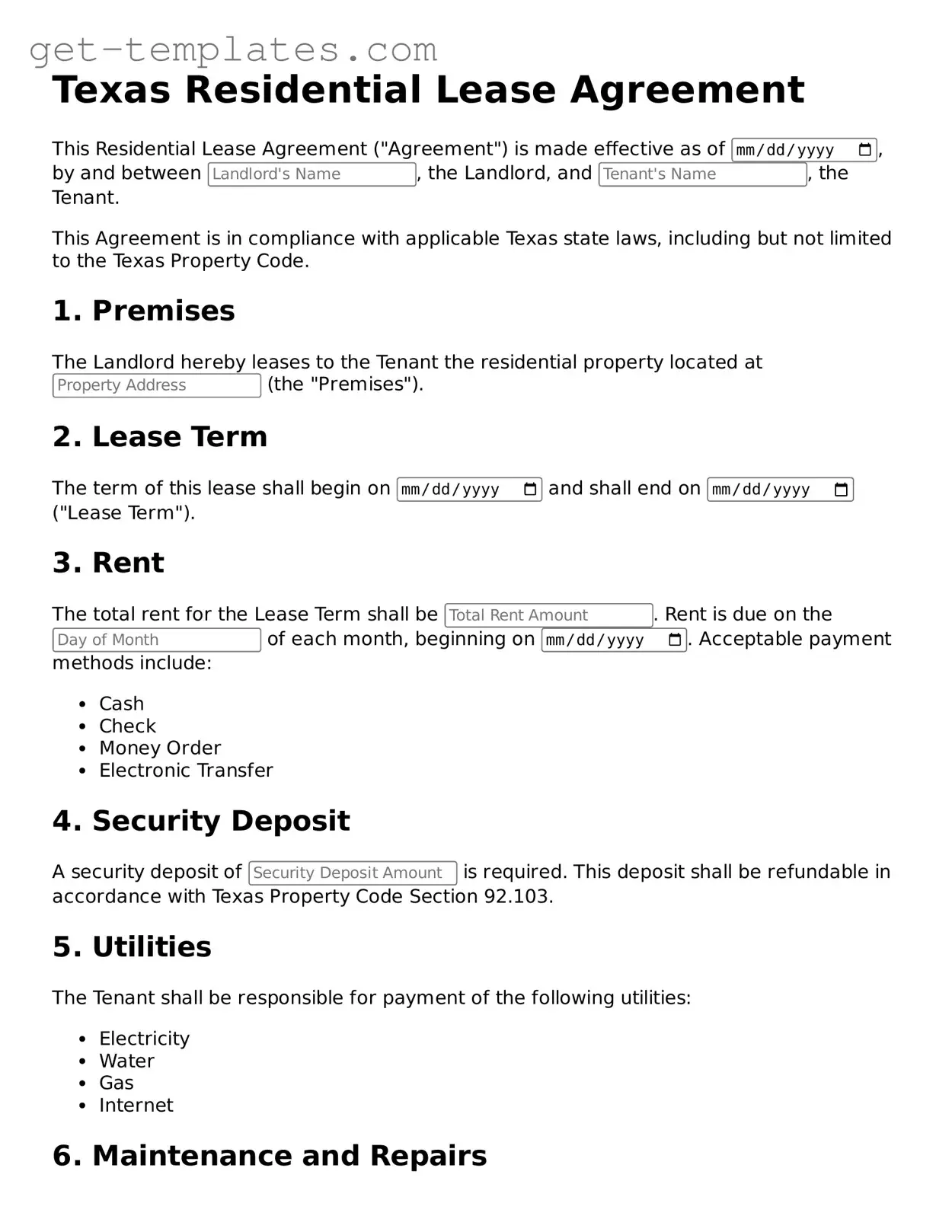Attorney-Approved Residential Lease Agreement Document for Texas
A Texas Residential Lease Agreement is a legally binding document that outlines the terms and conditions between a landlord and a tenant for renting a residential property in Texas. This agreement details important aspects such as rent amount, lease duration, and responsibilities of both parties. Understanding this form is essential for ensuring a smooth rental experience and protecting the rights of everyone involved.
Get Document Online
